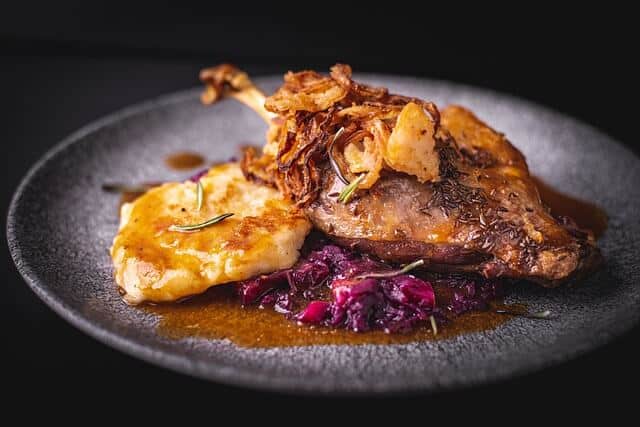Exploring the Wonders of Authentic Australian Cuisine: A Parent’s Guide
G’day, Aussie food explorers! Welcome to your ultimate guide to navigating the scrumptious and wholesome world of authentic Australian cuisine. If you’re a parent on the lookout for new and exciting dishes to introduce to your family, you’re in for a treat! Australian food isn’t just about vegemite sandwiches and meat pies; it’s a vibrant tapestry of flavors influenced by Indigenous heritage and a fusion of global cultures.
We know how hectic life can be for parents, which is why we’ve crafted this guide to fit perfectly into your busy schedule. You’ll find everything you need to know about Australian culinary traditions, and we’ll share some family-friendly recipes that even the littlest foodies will adore.
Aussie Ingredients: The Building Blocks of Down Under Delights
Before we dive into the dishes, let’s chat about the unique ingredients that form the basis of many authentic Australian meals. Australia’s diverse ecosystems contribute to an equally diverse range of food products. From the sea to the bush, Australian food is fresh, flavorful, and often found nowhere else on Earth.
- Bush Tucker: Ingredients foraged from Australia’s native bushland, like lemon myrtle, wattleseed, and finger limes, provide a taste of the country’s ancient Indigenous roots.
- Seafood: Surrounded by oceans, Australia boasts an array of seafood, from Barra (barramundi) to Balmain bugs. Introduce your family to the seaside flavors with some simple yet delicious fish dishes.
- Meats and Game: Now, Australia’s meat scene goes beyond just beef and lamb. Dive into tastes like kangaroo, emu, and crocodile for a culinary adventure at home!
- Fruits and Veggies: The land down under features a plentiful produce aisle filled with exotic fruits like kakadu plums and quandongs, perfect for nutritious and exciting snacks.
Family-Friendly Australian Recipes to Try at Home
Ready to get cooking? Preparing Australian cuisine together can be a delightful family activity that not only satisfies the tummy but also cultivates a deeper understanding of Australia’s rich culinary heritage. Let’s start with something that’s simple to make and popular with kids and adults alike.
Classic Aussie Meat Pie
Nothing screams Australian comfort food quite like a flaky, savory meat pie. It’s a true-blue classic, ideal for a family lunch or dinner.
To start, you’ll need:
- 500g lean minced beef
- 1 medium onion, finely chopped
- 2 tablespoons of tomato paste
- 2 cups beef stock
- 1 teaspoon of Vegemite (optional, but recommended for that authentic Australian flavor)
- Ready-rolled puff pastry sheets
- 1 egg, beaten for glazing
Preheat your oven to 220°C (428°F). In a large saucepan, cook the onion and minced beef until browned. Stir in tomato paste, beef stock, and that iconic Vegemite. Let it simmer until the sauce thickens. Cut out large circles from your puff pastry and press them into a muffin tray to form the base of your pies.
Click here for the detailed step-by-step meat pie recipe that will walk you through creating the perfect Aussie pies right in your kitchen.
Stay tuned for more delicious recipes and tips on how to incorporate Australian cuisine into your family meals.

5 Things Parents Should Know When Preparing Authentic Australian Food
Embracing the world of Australian cuisine is exciting, but it’s also essential to prep with some handy knowledge under your belt. Here are five valuable tips to make sure your culinary adventure Down Under is as smooth as a billy tea:
1. Understanding Aussie Flavor Profiles
Australian cuisine is a flavorful blend of sweet, savory, and sometimes umami tastes. Ingredients like Tasmanian pepperberry and bush tomato can introduce your family to a whole new range of flavors. Learning about these distinct tastes will help you better incorporate them into family-friendly dishes.
2. Cooking with Native Spices and Herbs
The use of native spices and herbs is what makes many Australian dishes unique. Get acquainted with the likes of Tasmanian mountain pepper, bush mint, and native basil. These mighty flavor bombs can enhance even the simplest of recipes with a true taste of Australia.
3. Embracing Seafood and Sustainable Practices
As a parent, it’s important to teach your kids about sustainable eating. Australian cuisine features an abundance of seafood, and choosing ethically sourced options can encourage environmentally friendly habits. Whether it’s succulent prawns or firm-fleshed fish, your family can enjoy these oceanic delights while learning valuable lessons.
4. Family Participation in Cooking
Get your little joeys hopping into the kitchen! Cooking together is a fabulous way to bond and introduce them to fun food facts and cooking techniques. Making dishes such as Lamingtons or Fairy Bread can be a joyous and educational experience for kids.
5. Celebrating Cultural Diversity Through Food
An integral part of appreciating Australian food is recognizing its cultural diversity – from Indigenous Australian recipes to the more recent influences of Asian and European cuisines. Embrace this fusion by preparing dishes from different cultures and discussing the stories behind them.
So gear up, mates! With these tips in your culinary pouch, you’re all set to explore the delectable world of Australian cuisine. Whether it’s a traditional Sunday roast or a festive Anzac Day biscuit bake, you’re now ready to dabble in food that’s as diverse and vibrant as the land of Oz itself.
For more fantastic family-friendly recipes and cultural culinary insights, don’t forget to bookmark this page. Your family food adventures are just beginning, and each Australian meal is an opportunity to discover, share, and enjoy together. Savour the flavours and make some splendid memories while you’re at it. Bonza eats ahead!
For more great fun click here. For more information see here
Disclaimer
The articles available via our website provide general information only and we strongly urge readers to exercise caution and conduct their own thorough research and fact-checking. The information presented should not be taken as absolute truth, and, to the maximum extent permitted by law, we will not be held liable for any inaccuracies or errors in the content. It is essential for individuals to independently verify and validate the information before making any decisions or taking any actions based on the articles.




